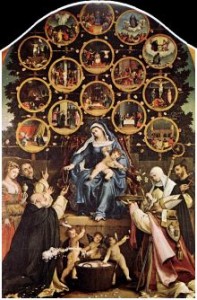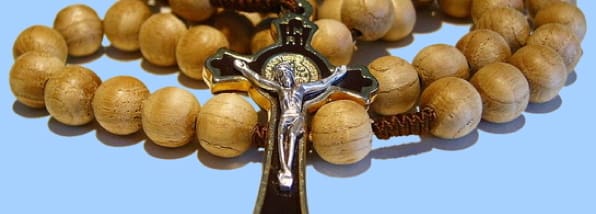 On October 7th, 1571, the Catholic Holy League of Europe met the invading naval power of the Ottoman Empire, and over 400 ships and 100,000 men fought on seas of western Greece. In what some historians describe as the most significant naval battle since the birth of Christ, a politically fractured Europe – led by the illegitimate son of Emperor Charles V, Don John of Austria – stood as the last line of hope against a full-scale Ottoman invasion of southern Europe.
On October 7th, 1571, the Catholic Holy League of Europe met the invading naval power of the Ottoman Empire, and over 400 ships and 100,000 men fought on seas of western Greece. In what some historians describe as the most significant naval battle since the birth of Christ, a politically fractured Europe – led by the illegitimate son of Emperor Charles V, Don John of Austria – stood as the last line of hope against a full-scale Ottoman invasion of southern Europe.
The great British rhetorician and apologist G.K. Chesterton penned the poem of Lepanto in honor of the decisive victory. In part:
Strong gongs groaning as the guns boom far,
Don John of Austria is going to the war,
Stiff flags straining in the night-blasts cold
In the gloom black-purple, in the glint old-gold,
Torchlight crimson on the copper kettle-drums,
Then the tuckets, then the trumpets, then the cannon, and he comes.
Don John laughing in the brave beard curled,
Spurning of his stirrups like the thrones of all the world,
Holding his head up for a flag of all the free.
Love-light of Spain–hurrah!
Death-light of Africa!
Don John of Austria
Is riding to the sea.
Victory won and Europe preserved, the Crusaders lost 7,500 men and 17 ships. The Ottomans suffered their greatest naval loss in over a century with 17-50 ships sunk, 137-177 ships captured, and over 20,000 either wounded or captured. Don John of Austria was able to free an estimated 10,000 to 15,000 Christian slaves.
Though the rosary finds its origin in St. Dominic’s struggles against the Albigensians and is even credited with the victory against them at the Battle of Muret – it was not until the victory at Lepanto that Pope Pius V instituted the feast of Our Lady of the Rosary. As Don John fought upon the seas of Greece, Pope Pius V had called the Church together to recite the rosary in hopes that Europe would be saved from an Islamic invasion.
The feast was localized primarily to Spain until two military victories in the 18th century convinced Pope Clement XI to declare a universal celebration. The Church saw something undeniable when Catholics were willing to both stand for what was good and just, and humble themselves in prayer and meditation to the mysteries of Christ through the eyes of Mary.
We are all aware of the beauty and grace the Rosary can bring to our personal lives, but often we forget about its power to change human society. As Catholics, our liturgical rythym is shaped by holy days that call us to remember events that memorialize God’s love and action in human history. Remembering these events has a profound effect not only on our own spiritual formation, but also upon our vocation to shape society.
We – like our brave and holy forefathers – must be people of bravery and of the rosary. Financial hardships, global uncertainties, and military conflicts have presented us with a world in constant need of the spiritual and corporeal acts of mercy. And on the defensive, many are aware that the USCCB has created an ad hoc committee for Religious Freedom to combat the deterioration as observed in new HHS mandate and abandonment of DOMA.
To dig deeper into the treasury of the Church’s light on Mary Fr. Peter Cameron’s Mysteries of the Virgin Mary: Living Our Lady’s Graces is an excellent resource. Fr. Cameron’s book is not a theological or historical treatise, but rather a devotional guide that the Catholic reader can turn to throughout the year to understand and meditate on Marian events. Meditating upon Our Lady’s life and saying her rosary,can produce significant change extending far beyond individual hearts and even into the events of nations.
Fr. Cameron will be appearing on EWTN’s literary program Bookmark on October 16th to discuss the implications of the mysteries of Mary’s life.
Catholics are people of action and prayer. Looking back over the history of the Church we see our fellow brothers and sisters who have acted bravely and prayed piously. Their actions shaped our world. Now we must shape ours.





